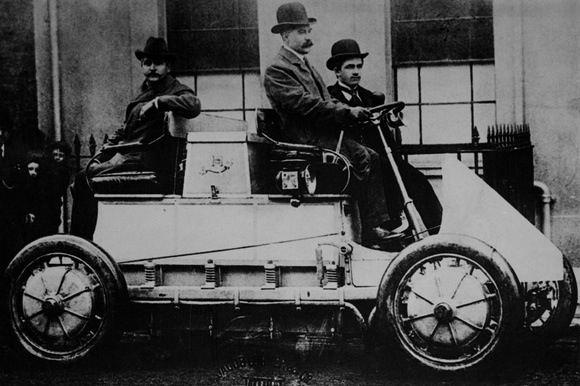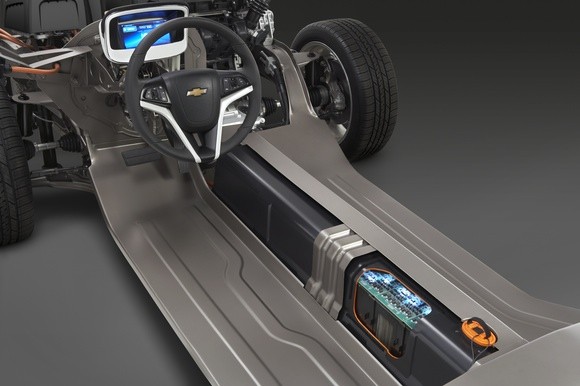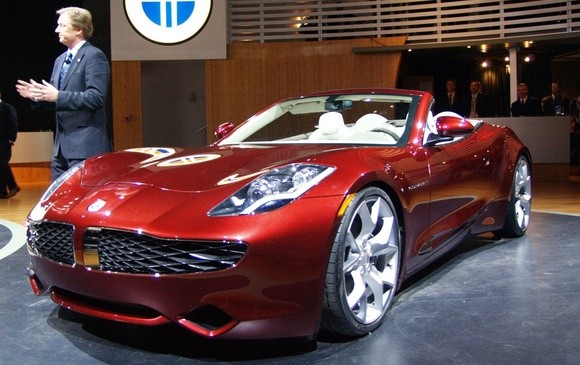Ever since the debut of the Chevrolet Volt concept in January 2007, the arguments have come fast and furious abut whether it is a hybrid or an electric vehicle. Technically, its actually both. There are those who insist on calling the Volt and similar vehicles from Chrysler, series or serial hybrids. This argument seems to come mostly from those who believe an electric vehicle should have nothing but a battery (or other electrical device) on board for energy storage. Certain proponents of parallel hybrid technology also prefer the series hybrid moniker, since it implies that the system is not that much more advanced than current production systems.
 The counter argument from General Motors and others is that this drive architecture is more accurately referred to as a range extended electric vehicle. The premise here is that even there is an engine in the vehicle, it is not connected to the wheels and only the electric motor(s) provides actual propulsion. Let's take a look (after the jump) beyond the semantic argument at the actual technology that moves cars like the Volt.
The counter argument from General Motors and others is that this drive architecture is more accurately referred to as a range extended electric vehicle. The premise here is that even there is an engine in the vehicle, it is not connected to the wheels and only the electric motor(s) provides actual propulsion. Let's take a look (after the jump) beyond the semantic argument at the actual technology that moves cars like the Volt.
Let's step back for a moment and consider parallel vs series. By definition, parallel lines are always the same distance apart and moving in the same direction. In a parallel hybrid, two (or conceivably more) power-plants can each provide a torque flow path to the drive wheels. Either power-plant can provide torque to the wheels independent of the other (read more on parallel hybrids).
In a series architecture, multiple systems feed into each other in sequence with only one connection to the end point, namely the drive wheels. For example an internal combustion engine would drive a generator that produces electricity. That electricity could feed into a battery which would then drive an electric motor to propel the vehicle. The engine doesn't directly drive the wheels through a transmission the way it can in a parallel hybrid.
Series hybrids are nothing new and, in fact, the very first hybrid used this configuration back at the beginning of the twentieth century with the Lohner-Porsche. Since the 1920s, the most common series hybrid application has been railroad locomotives. These machines use a diesel driving a generator which feeds the motors that drive the wheels. Automotive applications add a battery to the mix.

Depending on the size of the battery, the vehicle may or may not have any zero emissions range. A series hybrid with a small battery could run the engine at constant speed in its most efficient range. The battery could then be used to store extra energy from the engine at light load conditions or from regenerative braking. When extra power is needed for acceleration, the battery can provide this.
Going to a larger battery with plug-in capability can allow the vehicle to operate in zero emissions road for some period of time dependent on the capacity of the battery. A compact car like the Volt with a 16 kWh battery can operate for up to 40 miles without running the engine. In no case does the engine ever send drive torque directly to the wheels. This particular configuration is what GM and others are referring to as ER-EVs.

There are downsides to the series hybrid layout. Having a vehicle operate with an engine running at constant speed can get the best efficiency out of that engine. However, a series hybrid has multiple energy transformations. Every energy transformation involves some losses. A conventional mechanical geared transmission, is generally about 95 percent efficient transferring energy.
Going from an engine's mechanical energy to electrical energy will produce some loss depending on the efficiency of the generator. Similarly, there are losses in a battery as it heats up when being charged. There are also losses going from the battery back to the drive motor. Of course, some of this is offset by recapturing kinetic energy through regenerative braking and the previously mentioned engine efficiencies.

The real benefit comes from having that larger battery that gets charged off the grid. If an ER-EV is operated without plugging it in, it will likely not get any better fuel economy than a conventional similar vehicle. If however, the vehicle is operated largely within its electric range and then plugged in, the reduction in fuel consumption, even when the grid energy is factored in, can be huge.
So,is the Volt an ER-EV or a plug-in series hybrid? Both, really, but who cares? It doesn't matter as long as it works.
 The counter argument from General Motors and others is that this drive architecture is more accurately referred to as a range extended electric vehicle. The premise here is that even there is an engine in the vehicle, it is not connected to the wheels and only the electric motor(s) provides actual propulsion. Let's take a look (after the jump) beyond the semantic argument at the actual technology that moves cars like the Volt.
The counter argument from General Motors and others is that this drive architecture is more accurately referred to as a range extended electric vehicle. The premise here is that even there is an engine in the vehicle, it is not connected to the wheels and only the electric motor(s) provides actual propulsion. Let's take a look (after the jump) beyond the semantic argument at the actual technology that moves cars like the Volt.
Let's step back for a moment and consider parallel vs series. By definition, parallel lines are always the same distance apart and moving in the same direction. In a parallel hybrid, two (or conceivably more) power-plants can each provide a torque flow path to the drive wheels. Either power-plant can provide torque to the wheels independent of the other (read more on parallel hybrids).
In a series architecture, multiple systems feed into each other in sequence with only one connection to the end point, namely the drive wheels. For example an internal combustion engine would drive a generator that produces electricity. That electricity could feed into a battery which would then drive an electric motor to propel the vehicle. The engine doesn't directly drive the wheels through a transmission the way it can in a parallel hybrid.
Series hybrids are nothing new and, in fact, the very first hybrid used this configuration back at the beginning of the twentieth century with the Lohner-Porsche. Since the 1920s, the most common series hybrid application has been railroad locomotives. These machines use a diesel driving a generator which feeds the motors that drive the wheels. Automotive applications add a battery to the mix.

Depending on the size of the battery, the vehicle may or may not have any zero emissions range. A series hybrid with a small battery could run the engine at constant speed in its most efficient range. The battery could then be used to store extra energy from the engine at light load conditions or from regenerative braking. When extra power is needed for acceleration, the battery can provide this.
Going to a larger battery with plug-in capability can allow the vehicle to operate in zero emissions road for some period of time dependent on the capacity of the battery. A compact car like the Volt with a 16 kWh battery can operate for up to 40 miles without running the engine. In no case does the engine ever send drive torque directly to the wheels. This particular configuration is what GM and others are referring to as ER-EVs.

There are downsides to the series hybrid layout. Having a vehicle operate with an engine running at constant speed can get the best efficiency out of that engine. However, a series hybrid has multiple energy transformations. Every energy transformation involves some losses. A conventional mechanical geared transmission, is generally about 95 percent efficient transferring energy.
Going from an engine's mechanical energy to electrical energy will produce some loss depending on the efficiency of the generator. Similarly, there are losses in a battery as it heats up when being charged. There are also losses going from the battery back to the drive motor. Of course, some of this is offset by recapturing kinetic energy through regenerative braking and the previously mentioned engine efficiencies.

The real benefit comes from having that larger battery that gets charged off the grid. If an ER-EV is operated without plugging it in, it will likely not get any better fuel economy than a conventional similar vehicle. If however, the vehicle is operated largely within its electric range and then plugged in, the reduction in fuel consumption, even when the grid energy is factored in, can be huge.
So,is the Volt an ER-EV or a plug-in series hybrid? Both, really, but who cares? It doesn't matter as long as it works.



Sign in to post
Please sign in to leave a comment.
Continue